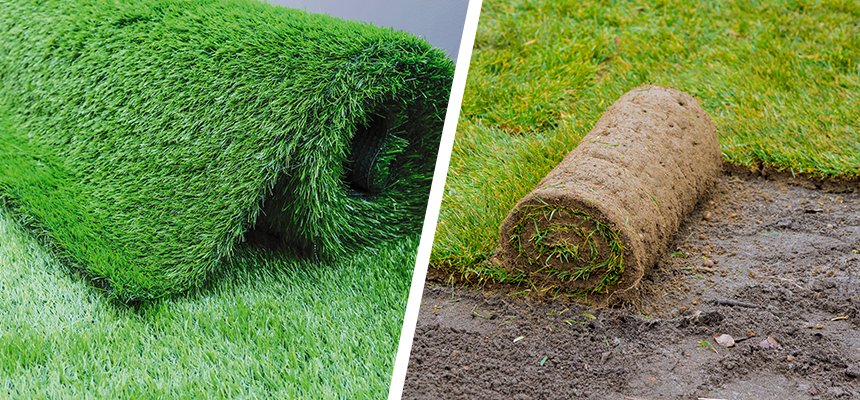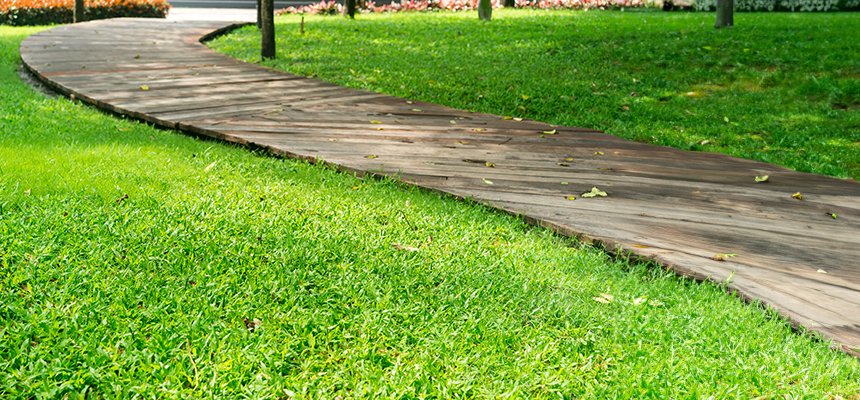Water is a precious resource that we need to conserve for the health of our planet and ourselves. Considering the global rise in temperatures, homeowners are seeking innovative ways to reduce their ecological footprint. One such method gaining popularity is the installation of artificial grass, also known as synthetic turf or turfgrass. Besides offering aesthetic appeal and low maintenance, artificial grass presents an effective way for water conservation. In this blog, we will explore the water-saving potential of artificial grass. We will compare it to traditional natural grass lawns and explore the environmental impact it has.
According to the Environmental Protection Agency (EPA), the average American uses about 320 gallons of water per day. About 30% of that goes to outdoor use. Of that outdoor water use, more than half goes to watering lawns and gardens. That means that the average American uses about 48 gallons of water per day just to keep their lawn green and healthy.
However, depending on where you live, the amount of water you use for your lawn can vary greatly. For example, in California, where droughts are common and water restrictions are enforced, the average water use for a lawn is about 52 gallons per square foot per year. In Texas, where summers are hot and dry, the average water use for a lawn is about 58 gallons per square foot per year. In contrast, in New York, where rainfall is abundant and temperatures are moderate, the average water use for a lawn is only about 25 gallons per square foot per year.


To calculate how much water you use for your lawn, you need to know two things: the size of your lawn and the amount of water your sprinkler system delivers. You can measure the size of your lawn by multiplying its length and width in feet. For example, if your lawn is 20 feet by 30 feet, then its size is 600 square feet.
To measure the amount of water your sprinkler system delivers, you can use a simple method called the catch-can test. Or, you can follow the steps below:
Alternatively, you can use the Catch-Can method. You will need a few empty cans or containers of the same size, such as tuna cans or coffee mugs to start. Place them around your lawn at equal distances from each other and the sprinkler heads. Then, turn on your sprinkler system for 15 minutes and measure how much water is collected in each can. Get the average water depth in inches. Multiply that by 0.623 to get the amount of water in gallons per square foot. For example, if you collect an average of 0.5 inches of water in each can, then you are using 0.5 x 0.623 = 0.312 gallons of water per square foot.
To get the total amount of water you use for your lawn per year, multiply the amount of water per square foot by the size of your lawn by the number of times you water your lawn per week and by 52 weeks. For example, if you use 0.312 gallons of water per square foot, have a 600 square-foot lawn, and water it twice a week, then you are using 0.312 x 600 x 2 x 52 = 19,468 gallons of water per year.
Artificial grass is a synthetic alternative to natural grass that looks and feels like real grass. But it does not need any watering, mowing, fertilizing, or pesticides. It is made of durable fibers that are attached to a backing material and filled with sand or rubber granules to provide cushioning and stability.
One of the main advantages of artificial grass is that it can save you a lot of water compared to natural grass. Estimates range from 50% to 90%, depending on factors like climate, watering habits, and the type of artificial grass installed.
Imagine you have a 1,500-square-foot lawn in California and use an average of 52 gallons of water per square foot annually. Switching to artificial grass can potentially save you:
That's enough water to fill 312 bathtubs!

Saving water with artificial grass not only helps the environment but also helps your wallet. Depending on where you live and how much you pay for water, artificial grass can save you hundreds or even thousands of dollars on your water bills every year.
For example, in California, where the average price of water is $4.32 per thousand gallons (as of January 2021), artificial grass can save you up to $142 per month or $1,704 per year for a 600-square-foot lawn. In Texas, where the average price of water is $2.08 per thousand gallons (as of January 2021), artificial grass can save you up to $69 per month or $828 per year for a 600-square-foot lawn. In New York, where the average price of water is $3.99 per thousand gallons (as of January 2021), artificial grass can save you up to $132 per month or $1,584 per year for a 600-square-foot lawn.
Of course, these savings are only based on water usage and do not include other costs associated with natural grass, such as mowing, fertilizing, pesticides, and repairs. Artificial grass can also save you money on these expenses, as it requires very little maintenance and has a long lifespan of up to 20 years.


While artificial grass offers compelling advantages in terms of water conservation and cost savings, it's essential to consider its broader environmental impact. Some of the key environmental benefits and downsides include:
Artificial grass is a great way to save water, money, and the environment. By replacing your natural grass lawn with artificial grass, you can reduce your water consumption, lower your water bills, and enjoy a beautiful and low-maintenance lawn year-round. Artificial grass also has many other benefits, such as enhancing the appearance and value of your home, creating a safe and comfortable surface for your kids and pets, and offering a variety of styles and colors to suit your preferences.
If you are interested in installing artificial grass in your home, contact Ergeon today for a free estimate. We are a professional and experienced artificial grass company that can provide you with high-quality products and services. We can help you design and install the perfect artificial grass lawn for your needs and budget.
Don't wait any longer. Save water, save money, and save the planet with artificial grass. Contact us today and get ready to enjoy the benefits of artificial grass for years to come.
 Artificial Grass Guides
Artificial Grass Guides Artificial Grass Guides
Artificial Grass Guides Artificial Grass Guides
Artificial Grass Guides